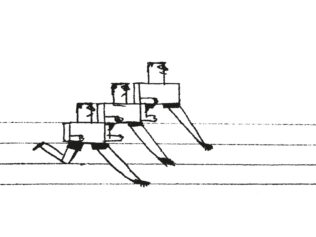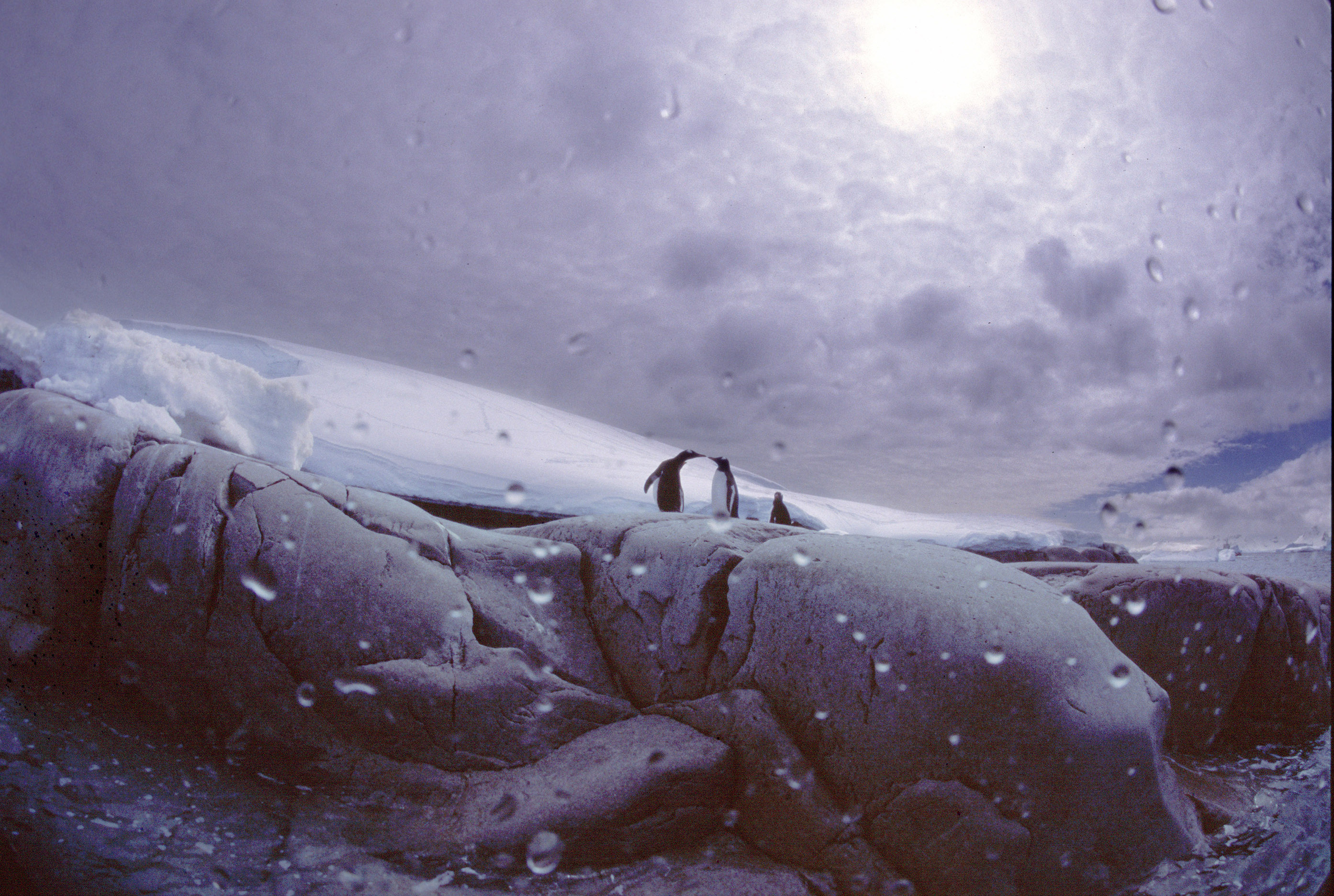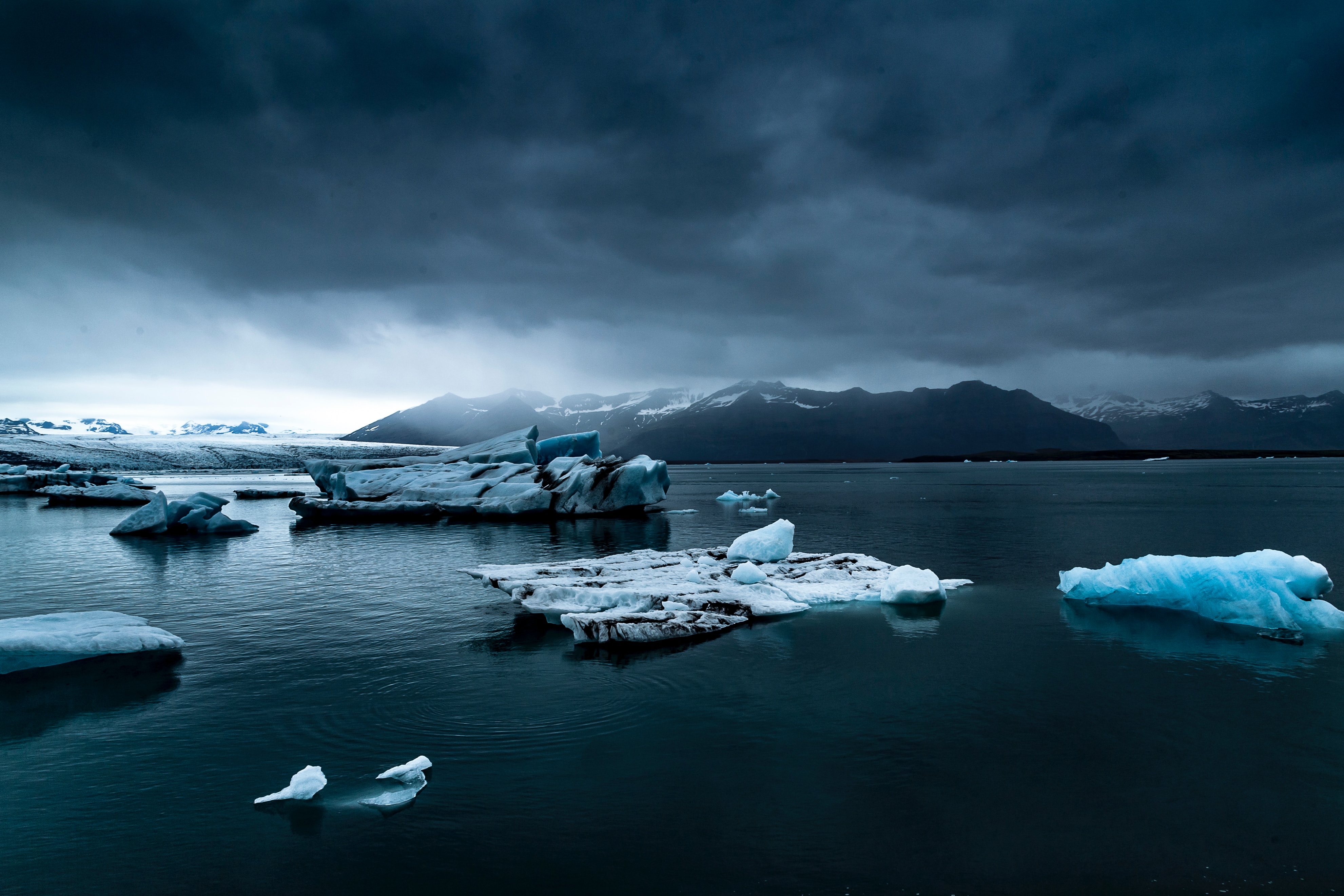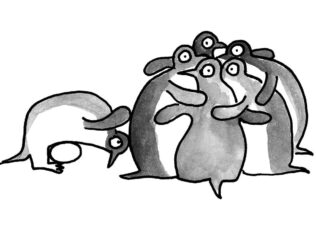
It’s possible that when you think of paradise, you imagine palm trees, the sound of the sea, and soft white sand. OK, that could be your paradise. Mine is a lot different.
I made it to paradise for the first time 17 years ago, after a 40-day voyage from Gdynia along with the 27th Polish Antarctic Expedition to the Arctowski Station. I arrived there and since that time, I basically still can’t believe my luck. Because it’s one thing to read about penguins that wander around not paying any attention to us, and another thing to see that they not only exist, but they are indeed wandering around not paying any attention to us. And that nearby is an elephant seal with her new-born pup that looks like a mole weighing 30-something kilograms covered in black woolly fur with sweet yet clueless gigantic black eyes. During the few days it took to unload, when we had to carry all the equipment and food we brought with us from the ship and pump out the fuel, the mole nearly doubled in size. And three weeks after it was born, it weighed over 100 kilograms and swapped its black fur for a shiny dark grey velvety version.
Since this was the first elephant seal and the first pup I had seen in my life, I had no idea about how exceptional they were. I knew that female elephant seals usually give birth on collective beaches where a male ruler is in charge, but it wasn’t until 10 years later that a scientific publication appeared with the sensational scoop that certain females don’t give a care about this whole harem nonsense, so they choose their males during their marine travels, and later give birth away from the crowds. We had such independent females visit us at Arctowski even before it became trendy.
The animal has priority
Although quite honestly, the term ‘visit us’ is not fitting here. There were never any indigenous peoples on Antarctica, which means that we’re the ones doing the visiting, while the other animals are our hosts. They are at home here; this is one of the first rules that people coming to Antarctica hear, be it the staff at scientific stations or tourists. If a penguin is going somewhere and your paths should cross, you need to stop and let it go first, as if you were at a traffic light. Always. And in general, you are not allowed to get any closer than five metres to the locals.
Of course, the animals are not bound by such limitations. If they become interested, they will come up to us on their own, which is a guarantee of the most wonderful encounters you could ever imagine. Nothing compares to the feeling you get when a wild penguin lies on your lap or nibbles your shoes, or a young fur seal or elephant seal plants a very wet kiss on your nose.
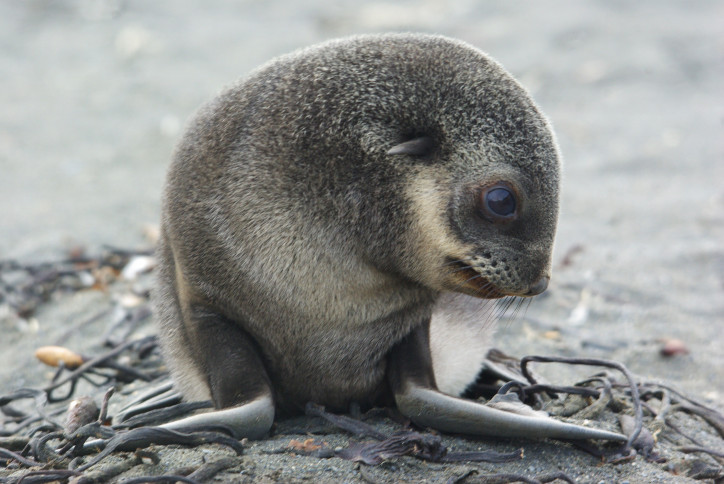
The next thing I wasn’t aware of 17 years ago was that I would devote my entire life to the Antarctic. I knew that such a visit could leave a long-lasting memory, because a few of my colleagues from the Faculty of Biology at the University of Warsaw took part in the first expeditions to the Arctowski Station, and were still talking about it 20 years later. Yet my voyage was supposed to be a one-time adventure, a year spent in a fantastic location, my childhood dream come true and an opportunity to think about what I would do next. This was not the case though: since then, I’ve been spending time in the Antarctic each year. My dreamland has jumped into my reality and stayed here.
The legend that came true
The Antarctic has been present in the human imagination for the past 2000 years. Already in 340 BC, Aristotle stated that since the Earth is round and there is land in the north, then there must be some kind of land in the south to keep the Earth in balance. Of course, he wasn’t completely right, because we know today that the Earth is a ball flying in the cosmos, so there is no reason to have to balance anything. Yet from incorrect circumstances he did draw the correct conclusion. In the 1st century AD, Cicero called this contrived continent Terra Australis (or quite simply, the South Land), while 200 years later, Marinus of Tyre came up with the term Antarctic. The Anti-Arctic was to be the total opposite of the Arctic; its name in turn comes from the Greek word arctos meaning ‘bear’. This was actually a reference to the northern constellation of Ursa Major (or the Great Bear), but thanks to this association, it’s easier to remember that polar bears are there and not where the penguins are. And indeed, these regions contrast with each other not only because they are situated on two opposite ends of the world; while the Arctic is an ocean surrounded by the northern fragments of large continents, Antarctica is a giant continent surrounded by a great ocean, which has a significant effect on the functioning of both ecosystems.
Here we come to the fundamental difference between Antarctica and all other continents: it is so isolated, so far away from the remaining land masses that nearly everything that lives there had to either fly there or swim there, overcoming hundreds of miles of turbulent ocean waters. I say ‘nearly’ because there are terrestrial invertebrates there whose ancestors never left their native environment. They were already there when Antarctica bade a tender farewell to the Gondwana supercontinent, from which it broke off around 80 million years ago. It was much warmer there then, and dinosaurs were walking around. The latter are no longer around today, and the largest terrestrial animal in Antarctica is the wingless midge Belgica antarctica, which hides all of the eight millimetres of its being among the moss and lichens.
What does that mean? It means that the vertebrates of Antarctica, or the birds and mammals living there, have no enemies on land. There are no polar bears, wolves or even foxes. Evolution did not accommodate these animals to have to be afraid of anything on land. That is why they generally do not fear people or do not pay any attention to them, or if they are feeling curious, they come up to say hello.
Cook the disbeliever
But the ancient Greeks weren’t aware of all of this yet. They did know from experience that the further south they went the hotter it would get, and that’s why they believed that an impassable ring of fire separated us from the mysterious southern land and that we’d never get there. However, over the next centuries, along with voyages going ever further and geographic discoveries made by civilizations from Europe and the vicinity, dreams of the Antarctic became more and more intense. Although maybe not exactly the Antarctic, because that name basically wasn’t adopted for nearly two millennia, but rather Terra Australis Incognita, an ‘unknown land in the south’, which had been marked as a giant white spot at the bottom of our maps for centuries. As late as the 17th century, the spot was joined to Australia and South America, but the further south we made it, the more it would shrink and become more isolated, to the point that some people started to doubt its existence, such as the great James Cook (who at a certain point of his long voyage around the world nearly discovered Antarctica, the fog preventing him from seeing it). But the dream continued, and the more optimistically-inclined cartographers would mark the shrinking southern spot as Terra Australis Nondum Cognita, or ‘YET unknown southern land.’
Finally, the year 1820 came by; that’s when three distinguished travellers found the land independently of each other. The first was Russian Admiral Fabian Gottlieb von Bellingshausen, and not too long after him, the American explorer Nathaniel Palmer and Edward Bransfield from Ireland. Suddenly, the continent jumped out of dreamland and fell into our lives. While we have been unsuccessful at finding El Dorado, the Fountain of Youth, Atlantis or Hy-Brasil, Antarctica is a dream come true, the only mythical land we’ve ever discovered.
For the past 200 years, we’ve been trying to get to know this dreamland better. Comparing maps from the 19th century and the beginning of the 20th century is a fascinating exercise. Their earliest versions show a large white spot with small parts of sea coast added. Nobody knew at the beginning whether it was one continent, or maybe an archipelago? With time, more and more mapped fragments would appear and the pieces of the puzzle started to come together; although at the beginning of the 20th century, we were still looking for a sea route through the Antarctic Peninsula. That attempt was unsuccessful, of course.
Donkeys and lions
Antarctica also became the stage for the most unusual stories of people. Stories about vanity and arrogance, but also about resilience, wisdom, sacrifice and cooperation. As well as about ordinary luck. It was here that Captain Robert Falcon Scott, holding the belief of British supremacy typical for those times, conducted several expeditions to the South Pole. Scott believed that the use of dogs and skis was unworthy of a gentleman. He also wasn’t too concerned with the conscientious planning of food rations and expanded his team from four to five people at the last minute. This finally ended in the tragic death of Scott and his two companions on 29th March 1912. The two remaining companions died along the way as they returned to the base, resigned, as they had discovered that the Norwegian Roald Amundsen had made it to the destination a month earlier. I do not question the heroism of Scott and his companions, but for me this is the perfect example of how you should not approach mighty nature. Antarctica cannot be conquered and has an incredible capability of teaching humility. If you don’t learn, you die.
But you can work with Antarctica. Amundsen did a much better job at preparing his expedition. He had spent two winters before that among the Inuits in the Arctic, learning everything he could from them, from the way they dressed to how to guide a dog sled. And he had been skiing his entire life, while Scott did not make the effort to learn earlier, but rather decided to train a bit during the winter prior to venturing out to the South Pole. After a few tries, he figured that skis are not really suited for traveling in snow. As for Amundsen, not only did he make it to the destination significantly earlier, but he as well as his people returned in one piece, and actually weighed a bit more than they had when they started the expedition.
In December 1911, when Amundsen was coming back from the South Pole, Australian explorer Douglas Mawson and his two companions set off to trek across the southern continent. Earlier, Mawson rejected Scott’s invitation, having critically assessed his preparations, after which he organized his own expedition, which from a scientific point of view was the most successful in history. No expedition before or after that one had made so many discoveries. However, when Mawson himself set out with one of the exploring teams, both of his companions died. First, his British companion Belgrave Ninnis tumbled into a crack hidden beneath the snow, taking with him most of the dogs, food and equipment (including the tent). This happened 480 kilometres from the base. Mawson and Xavier Mertz began their strenuous return, while starving and suffering from vitamin A poisoning from the liver of the dogs they had eaten. And this type of poisoning is exceptionally spectacular, as the person quite literally falls apart. Towards the end of his trek, after the death of Mertz, the skin on the soles of Mawson’s feet completely fell off and before setting off each day, he had to tie the skin to his feet using bandages to avoid walking on raw flesh. But he survived, despite horrific conditions and very unfavourable coincidences when he missed the rescue group by a few hours… twice. His story is the most outstanding tale about the power of human will that I know.
A few years later, what is probably the best known of all Antarctic feats happened – this is when the Irish explorer Ernest Shackleton rescued his entire team trapped in the ice of the Weddell Sea. But for me, Shackleton’s even greater moment of glory was a few years earlier, when on 9th January 1909, he decided to turn back, although he was only 180 kilometres from the South Pole. Shackleton had made a precise calculation for his food rations and figured that although he and his people would be able to make it to the South Pole as the first people in history, they would probably die on the way back. So he chose responsibility over glory and got everybody safely to the base; to his wife, he wrote a sentence that should become the motto of all world travellers: “I thought you’d rather have a live donkey than a dead lion.”
Die another day
The Antarctic teaches humility all the time. I took part in four expeditions to the Arctowski Station, and each time somebody died. Not at our station, but at one of the nearby stations. A professional British diver was pulled under water by a leopard seal and drowned because she didn’t have a diving tank; two Argentinians decided to take a shortcut across the glacier, rode their snowmobile off the marked trail and died when they fell into a crack; finally, Polar explorers from South Korea sailed off too quickly in a nearly empty pontoon at high winds and their boat was turned over as a result. All these accidents happened to experienced professionals. One of the Argentinians had 12 winter-overs under his belt, the second had four, while the Koreans were finishing up their winter-over as well. I myself nearly died due to my own stupidity; during my fourth expedition, I decided to walk alone across a glacier that I knew very well, and fell into a crack.
Each time, human habit and arrogance were to blame; the conviction that we are immortal because we know it all. No, we don’t.
Even tourists coming here for a few days need to acknowledge the predominance of nature, which is the one and only queen here. You can have all the money in the world, but you can’t land on the shore during a storm or when ice floes block the way. I truly value these lessons in humility; they cleanse the soul and allow you to prioritize your values. I feel best in situations when all my problems boil down to one basic concern: don’t die today. Everything is clear and simple then, and all your other worries disappear.
Once we realize who the boss is there, the Antarctic can wonderfully show its appreciation. Not only through young trustful animals. Each and every one of the many encounters with whales swimming up to my boat left their mark. The feeling you get when something so enormous that it could kill you with one sweep of its fin swims up very carefully to see who you are is priceless. It does not want to eat you, because whales don’t eat things like that, and of course it’s not afraid of us because it’s three times longer than the pontoon; its great big brain simply wants to learn something new about the world. When I meet with children, I tell them again and again that we need to learn this attitude from the whale; that way, our encounters with the accidental mouse, frog or lizard will look very much the same.
A paradise in jeopardy
The nature of the Antarctic takes your breath away, but that’s only one of the attractions. Add to that magnificent landscapes with enormous mountains, black rock gleaming in white, and the blue of glaciers that cannot be experienced anywhere else. It’s really no surprise that more and more people are visiting the region with each year. Of all the different forms of the inevitable exploitation of the Antarctic, tourism is in my opinion the least invasive. I definitely prefer to take delighted people there than see miners or explorers of crude oil and other natural resources. Anyway, for the moment tourism is the only sector allowed in the Antarctic based on international treaties. And I hope it will stay that way.
Whether it’s with or without tourists, the Antarctic is already experiencing more and more serious problems for which we are to blame. The glaciers are melting more quickly than any climate model had assumed. Crawling along the bottom of Antarctic seas are giant Patagonian king crabs for which it had been too cold here just a few years ago. The shells of local invertebrates are not thick enough to defend against these crabs. Above the water, the wind patterns and air humidity are changing, and summer snow storms – which would rarely occur in the past – cover the colonies of Adelie penguins; as a result, their eggs and chicks die in the wet slush. Add to that the increasing acidity of the oceans, which dissolves the shells of marine inhabitants and disrupts their breeding processes. Krill, the base of the Antarctic ecosystem, reproduces at a smaller rate as a result, while in the winter it’s more difficult for it to find shelter under the shrinking ice cover, which had up until now guaranteed a cosy refuge full of tasty algae. To make matters worse, krill fishing is intensifying and we are stealing thousands of tons of these crustaceans from paradise each year. So we don’t know for how much longer yet Antarctica will manage to maintain its magnificence. What can we do? We can abstain from buying krill, reduce greenhouse gas emissions, and force politicians to do the same by going out into the streets. Can we succeed? The chances are small, but it’s sure that we won’t succeed if we don’t do anything. And it would be a shame; after all, it is paradise.
Yet another piece of proof that the Antarctic is paradise is the fact that polar explorers from all corners of the globe work together here. Aside from a few disgraceful exceptions (like the time when Scott forbade Shackleton to use his old base), people working here know that they depend on each other for their own lives. Even during the times of the Cold War, when the Soviet Union and US fought each other all over the world, in the Antarctic they would save each other by sharing food and fuel, and helping out with logistics. On King George Island, the Chilean and Russian stations are separated by a narrow stream. It was here that in the 1980s, one of the Polish scientists stood on the bridge between Pinochet’s Chile and the Soviet Union and uttered the words that have become legendary amongst Polish polar explorers: “This is the only place in the world where you can make the transition from fascism to communism with just one step.” The systems were in opposition, but the people were always friends. It’s the same today. Not only are we cooperating on a scientific level, but we can always count on each other. I thought about that once as I was sitting on the peak of a hill observing somebody’s tracks far in the snow. Antarctica is the only place in the world where if you see somebody’s tracks, though you don’t know who they belong to, you can be sure it’s a friend. It would be great if all of humanity could learn to live like the people here.
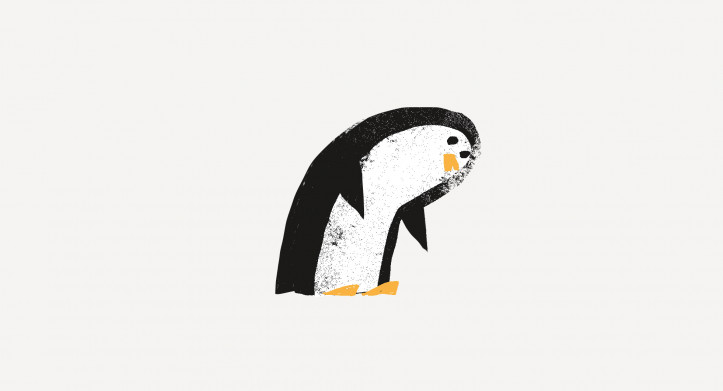
Translated from the Polish by Mark Ordon





